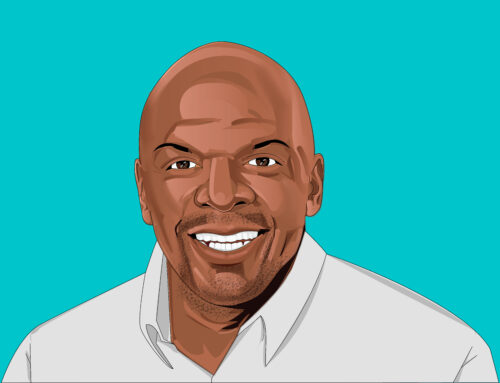Enter your information below to sign up to receive alerts on new interviews!
In this episode of Talent Chronicles, Bret Feig joins us to talk Talent Acquisition in the realm of PR and Media. Bret has industry-leading experience working with multiple media conglomerates. Feig talks about the importance of candidate experience, talent acquisition teams taking a partnership approach and people analytics.
JCSI: Hi everyone, this is Bergin Sullivan from JCSI. I’m here today with Bret Feig, joining us for an interview in our Talent Chronicle series. Thanks so much, Bret, for being here today.
Bret: Thank you, Bergin.
JCSI. So, you’ve worked as a Talent Acquisition executive in a variety of industries, with a more prevalent emphasis in Marketing and Communications. Do you want to give us a quick explanation of how you got into talent acquisition?
Bret: Yeah, absolutely. I think like most, I had sort of a bait and switch experience. First, I was right out of college. I was working some sales job and I got a call from a recruiting firm. At that point, I didn’t even know what a recruiting firm was, I just assumed they find people jobs and they wanted me to come in to talk about a job that they had found for me. I came in and they said, “Oh no, we want you to work here.” I’m like, “As a recruiter?” And certainly, you know at the time I thought that sounded exciting. That’s how I fell into it.
JCSI: All right. And what’s it like working with Talent Acquisition in the PR and Communications fields?
Bret: I can imagine not terribly different than many other fields. I think the Marketing or Marketing Communication field has been more focused on candidate journey and candidate experience. That’s obviously a broad generalization, but they’re in the business of controlling language, verbiage and the image that they want to portray. That’s filtered down to how we operated from Talent Acquisition. So, we’re a little bit more finely tuned to make sure we’re providing good candidate experience. Maybe we just understood the ramifications or the consequences of providing a poor candidate experience and seeing that net out or manifest itself in things like poor Glassdoor ratings or other types of feedback. We, sort of, understood how that communication works.
JCSI: Great, and kind of going off of that, how do you focus your communication with connecting and conversing with your candidates at the Talent Acquisition level when you are centered around communication as a business?
Bret: I imagine how almost everyone should, and that’s approaching it with a high level of empathy but also a high level of transparency. Being able to give people a sense of an honest understanding of what the opportunities are and how they fit, what the process is going to look like, and being able to come through on that in a timely focus. I don’t think anything I’m saying is remaking the world or going to light anyone on fire. But, you’d be really surprised how many companies aren’t putting the candidate at the center of their process as the most important. Yet these companies are spending hundreds of thousands of dollars to invest in new business and sales teams to go out there and win new clients. Yet you have a team that speaks to hundreds of potential, future clients on a day-to-day basis and many have yet to really understand how that really could impact things up channel.
JCSI: Right. Going into a little bit of your past experiences, what was it like building an in-house Executive Search Team?
Bret: When I first arrived at IPG’s Mediabrands, which is a clustering of about eight or nine different agencies all in the same building all working on the same clients, the first thing I did was buildout an Executive Search Team. That was really interesting because you’re, sort of, applying a lot of the high touch customer service driven mentality like you would in a traditional firm. But my goal was to partner with the various leadership throughout the Mediabrands ecosystem to understand their business challenges and understand how we were going to drive that through the lens of TA. This ultimately would help them not only find better talent but cut down on the hundreds of thousands of dollars that they were spending every year on retaining search firms.
So, it was a journey, I would say. It was an exercise in building relationships and understanding what the various hotpoints were, which could be very different if you’re talking to someone in Finance than if you’re talking to a Chief Technology Officer. By understanding that, you’re able to create a process that’s not just about finding people but understanding the candidate journey. This is understanding what we’re actually looking for, what that person is going to be expected to do when they get on board and how are we going to evaluate what success looks like. Then, crafting that process around that and seeing it all the way through. It was a really good experience.
But, we eventually grew that out to be four or five people. Before you knew it, the feedback coming back from the business on our success and level of talent and speed caused us to expand our efforts. At one point, we took over all of the roles that were Director, VP, and above, which was awesome. It was a validation of taking a partnership approach to it. We had to keep in mind we’re going to get through this together rather than serve as a delivery center. Rather than thinking “Okay, I’m going to produce candidates.” No, let’s think about this from a bigger picture today and 90 days down the road and let’s craft what we’re looking for, then find someone who not only is skilled but really wants this and is motivated to do that job.
JCSI: Right, and what kind of challenges did you come upon when you were doing that and how were you able to overcome those?
Bret: One of the first initial challenges was building the relationships with the business and getting them to understand how we were going to deliver the same level of, if not better, talent than they were used to when they were spending, $20,000 or $30,000 or $50,000 for a retained search firm. There was no secret sauce to how we did that. It was a lot of understanding their business and spending time with them, within the business. So, not having recruiting meetings, but actually interacting and getting to see people doing the jobs that we were going to be hiring for. A lot of it was, kind of, proof in the pudding. I think that once we were spending time with them upfront and really understanding them, then it was about delivering upon it. Success breeds success and word spreads quickly. So, I think, as soon as they saw, you know, “Wow, that role we got filled much quicker than I remember it ever having in the past and we really like who we ended up with. And, I don’t have to go to finance and explain why we now have a $50,000 bill.” You know, I think those three elements combined together was, like, wow this is a win, win, win across the board.
JCSI: Okay, and kind of going towards what you predict for the future, what types of market trends do you see affecting Talent Acquisition?
Bret: That’s a really good topic. I see changes on a couple of different fronts. One, I think every company is adjusting to a virtualized workforce. What does that mean and what does that actually equate to and how do we keep humanity within the process? Because a lot of new companies have been doing this across the board. Now companies are realizing they could tap into an untapped market. But, you still have employees that are looking to stay connected and having Zoom calls all day isn’t the answer. So, I see companies adapting to that as one.
Two, I see the constant battle between new technology, automation, and humanization playing out a little bit more. Technology is allowing certain parts of the processes to be automated, but there are certain forces saying, “Okay, well, has it been automated too much? Is it becoming robotic where candidates aren’t interacting with a real person and they’re not thinking about this as a real opportunity?” It’s a series of ‘do not reply’ emails. So, I see the battling of those forces and ultimately, I see a renewed focus or an increased focus on the candidate experience all the way throughout the process. It’s realizing they have a choice and what candidates value is different than it ever was before. In the past it might have been salary and benefits, thinking about how much they will pay towards medical or dental. I think that now they’re looking for companies who stand for ideals, who are giving back and who are in reality, the image that they are portraying. They want to see if the job ad is actually real, and the pictures that they see on social media aren’t just curated. They want to really work for a company that resonates with them on a much deeper level than I think we’ve ever seen before. And, I think that’s what you’re going to see play out.
JCSI: That is terrific. On that note, how do technological advances alter your work within Talent Acquisition and within PR or Communications?
Bret: That’s an interesting question. Technology pushes forward on an automation front. Looking for smarter, better ways to be able to touch more candidates, or to engage with candidates at an earlier stage. Looking at 30, 60, or 90 days out, how do we engage today with the people who will be ready to make moves or ready to consider opportunities down the road? I think as technology advances in that direction, the pushback is the risk of it becoming too automated, and candidates are not dumb. Let’s even stop using the word candidates, they are people, right? And they’re not dumb. They’ve been exposed to extreme automation through marketing on every other channel. There are people who are trying to sell them cable service, magazine subscriptions, who are used to, “Oh, all of a sudden I see an ad of something that I just Googled, you know.” It isn’t a coincidence, so, they’re savvy and they want that personal approach. They want a relationship driven process.
I think those are the two opposing forces that technology is trying to solve for. I don’t think there’s one solution. I think there’s a lot of different technologies in the space that help at different stages. But I don’t think the machine is ever going to take over the human. I really think it’s going to be about being able to automate some of the processes that don’t necessarily have an impact on people, whether that’s administrative or scheduling. To free up or produce time to spend on actually interacting, building relationships and understanding, at a much deeper level, what their company needs. Also looking at what that team, group or business unit’s culture is, and seeing recruiters being a part of the business, but also a bit of a matchmaker at the same time.
JCSI: Okay, and I understand that earlier in your career you were more focused on growth in your future opportunities. But more recently you have shifted to a focus on stability in your career. How do you view stability in the Talent Acquisition field? So, what does that look like to you?
Bret: It’s an illusion that has disappeared. I’m not saying that as someone who’s bearish about stability within TA. I’m saying that as someone who’s waking up just like 90% of the people out there who assumed that there were risky small startups with high reward and there was stability in large companies. I think what a lot of people are realizing in the wake of COVID-19 is that a lot of that stability was a well-positioned illusion, or something they took for granted. That is also the case five-fold within TA, especially TA from an in-house corporate standpoint. When companies are hiring, TA is a business partner. We are a cost saving center. We are a strategic unit to really help companies drive their business goals, but through the lens of talent in a broad sense.
Once hiring stops, a lot of companies can look at TA as a bit of a cost center. That’s what you are seeing playout in the marketplace today where you are seeing massive layoffs and big, large, global, very well-respected companies slicing, you know, 50%, 60%, 70% of their TA sourcing teams. Not even slicing the fat. Not even getting rid of poor performers. They are just saying, “Okay, we’re not hiring. Well, goodbye, 30% sourcing team, we’ll figure that out once we begin hiring again.”
I think for the future of TA, we really need to focus on not being that delivery center. Not focusing on putting butts in seats but continuing to be a partner to the business, to be a partner to HR, and to be an equal with HR. Just as a lot of HR VPs are helping the business solve challenges through the lens of their mechanisms, TA really needs to take up that sort of role and be able to leverage data better. They need to understand the core business and bring those two pieces together to help the company be more successful, not just be the recipients of the marching orders. I think that’s what’s going to define the successful TA groups of the future.
JCSI: Okay, are there any final thoughts or anything that we didn’t cover that you would like to share?
Bret: I think we covered a lot of it. The only other one piece I would throw out there is analytics, which is equal to candidate experience on its own and becoming more and more important. That, you know, for someone in TA or recruiting today that wants to build their career should pay attention to this. They should start augmenting their own understandings of people and analytics and how those two go together. Also looking at how companies take and utilize that data to make very strategic decisions for the future.
JCSI: Are there specific analytics that you find yourself paying more attention to in your role?
Bret: Yeah, we call it Business Analytics or People Analytics. It is all the numbers that help define what’s working, what’s efficient, and what’s not. It’s to define where we are finding our candidates and where we need to look that produces the best diverse channels. It’s to understand how talent is not just found, but how they’re being brought through the talent process. Also looking at what that onboarding is like, and who is actually successful here. For a long time, it’s been opinions loosely based on anecdotal data like, “Oh, this is what I’ve experienced, and we’ve asked a few people, so this is what I think it is.” Well, now, it’s more about how we leverage data that’s coming from the business, but also market data to understand trends, supply and demand, and how different channels are yielding, not in just the traditional sense.
For example, say we’ve hired five people that we found off this board and they seemed to work out. But, from a long-term perspective, what are the numbers actually telling us and how do we use that to be more accurately predictive when thinking holistically of the skill sets that a company’s going to need six months down the road. How do we prepare for that today or how do we think about that even from a learning & development standpoint. Preparing our current workforce to face the challenges of tomorrow or else, tomorrow we’ll be looking to replace our current work force. I think that all comes down to understanding the numbers and being able to use that to draw relationships or relationship type correlations from it.
JCSI: Right, absolutely. Well, we really appreciate you taking your time in joining us for our Talent Chronicles series! Thanks so much.
Bret: Thank you, Bergin. Take care guys.
Talent Chronicles is brought to you by JCSI, an innovative recruitment consultant that delivers better hires, faster, and at less cost.




